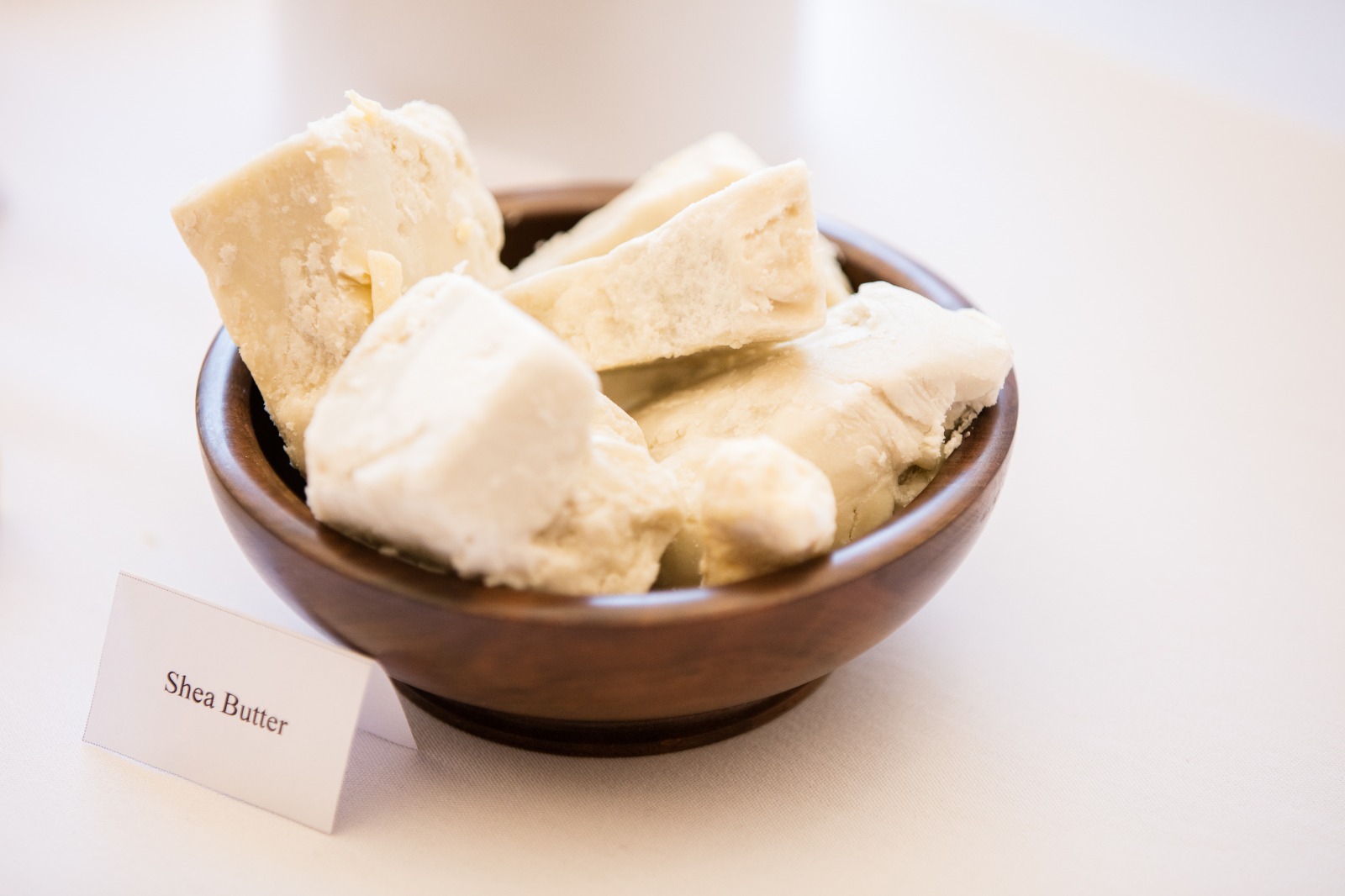Shea butter’s chemical nature is what gives it its benefits. Linoleic, palmitic, stearic, and oleic fatty acids are included in shea butter, and they help to balance the oils on your skin. Vitamins A, E, and F are antioxidant vitamins that promote healthy skin cell growth and circulation. Vitamin E, often known as tocopherol, and antioxidants called catechins.
Shea butter is popular in skincare and cosmetic product formulations because of the fat’s very high amount of nonsaponifiable lipid components, which could be a rich source of vitamin E.
Vitamins A and F provide anti-aging and hydrating qualities, respectively.
Shea butter contains fatty acids such as oleic, stearic, linoleic, and palmitic. These are great for the skin’s barrier and allow the butter to blend in with your skin’s natural oils.
Alpha-tocopherol, the component with the highest antioxidant activity among the tocopherols, makes up around two-thirds of the vitamin E in shea butter.
Shea butter’s phenolic composition is made up of catechin family components that are comparable to those found in green tea, which has recently gained popularity as an antioxidant-rich health beverage. Gallic acid was the most important component in shea kernels. Gallic acid is a well-known natural antioxidant that is a polyphenolic secondary metabolite. Gallic acid, also known as an Ayurvedic herb, is a typical antioxidant tea formulation.
Please remember this is for raw unrefined shea butter. As Shea Butter is refined it tends to lose some of its natural properties.
Shea butter is a superfood, obtained from the seeds and fruits of shea and karite trees. Its high proportion of non-saponifiable substances and other qualities has made it a popular component of many cosmetics, lotions, and other skincare products. Thanks to these and other special properties, shea butter not only moisturizes the skin but also provides important anti-inflammatory and anti-aging fatty acids.
In skincare, shea butter soaps and shea butter lotions help to moisturize the body and face and are rich in vitamins and minerals. Shea butter offers mild UV protection with sun protection factors and supplies the skin with essential fatty acids and nutrients necessary for collagen production. If you have sensitive skin, consider removing the fancy lotions and potions that irritate your skin and reaching for shea butter instead.
Thanks to the fact that shea butter contains vitamin E, it is beneficial in the treatment of irritated skin, whether sensitive or not. The vitamins contained in shea butter help to improve the skin structure and promote antioxidant activity. Shea butter is used to relieve windburn, dry spots, sunburn, and abrasions and to alleviate rashes in babies due to its antifungal and antibacterial properties.
Other benefits of the body using Shea butter are its natural anti-inflammatory and healing properties. Shea butter is an excellent way to get rid of stretch marks caused by steroid treatments to treat autoimmune diseases. I keep this heavenly butter in a mason jar in my bathroom and slap it on my skin before I apply it to my hair.
Shea’s moisturizing antioxidant properties help your skin produce healthy new cells. Its fatty acid components soothe the skin and retain moisture throughout the healing process. The vitamins contained in shea butter can contribute to the improvement of the skin structure by promoting antioxidant activity.
When applying shea butter, linoleic acid, oleic acid, stearic acid, and palmitic acid are absorbed into the skin. Since shea butter has not only a moisturizing property when used regularly but also a large proportion of its healing properties, it can treat many skin problems such as blemishes, wrinkles, itching, sunburn, small sores on the skin, eczema, skin allergies, insect bites, frostbite and other skin ailments. If you are struggling with chronic skin conditions such as eczema, rosacea or psoriasis, the fats in Shea butter can help reduce inflammation.




